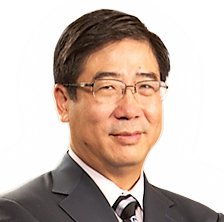Dr. Kaixuan Liu
Endoscopic Spine Surgeon Dr. Kaixuan Liu with Atlantic Spine Center with details about upper back pain causes and treatments.
— Dr. Kaixuan Liu
WEST ORANGE, NJ, UNITED STATES, August 8, 2023/EINPresswire.com/ — Back pain is one of the most common conditions there is, and most people can expect to experience it at some point in their life. While back pain is most often felt in the lower back, upper back pain is still common. There are a number of possible causes, ranging from injuries to aging to disease, and there are likewise a number of treatment options available. Dr. Kaixuan Liu, MD, PhD, and founder of Atlantic Spine Center, has advice on how to navigate upper back pain.
“The upper back is a complex area of the body that includes a large section of the spine as well as intersections between the back and the shoulders, ribcage, and neck, along with the associated muscles and tendons. It’s a fairly robust area, but there’s still a lot of opportunity for damage or disease that can lead to pain,” says Dr. Liu.
Upper back pain can take many forms. It can be a sharp stabbing pain, or it can be a dull, throbbing ache. It could be constant, or it could come and go with certain types of movements. Upper back pain might also involve stiffness, cramping, or pain with convulsive lung functions like sneezing or laughing.
Injuries are one common cause of upper back pain. Injuries to the upper back may happen all at once, and sometimes this can make the cause of pain obvious. Some examples include falls, auto collisions, and work accidents.
Other types of injuries can happen over the course of hours, days, or even months, and these might be more difficult to pinpoint. This can include ligament sprains or muscle strains from improper lifting techniques and twisting motions. It can also include overuse from repetitive motions that might come with one-time tasks such as moving or landscaping.
“Some of the most common reasons for upper back pain also can take a long time to become noticeable. Improper posture is very common for people who spend a significant amount of time sitting in front of a computer or looking down at their phone,” said Dr Liu.
“Sleeping positions and having an appropriate mattress and pillow can also be factors in upper back pain,” Dr. Liu added.
Pregnancy often results in back pain as well, which can be felt in any part of the back.
Other causes of upper back pain might be less obvious without proper diagnostic assistance. Herniated disks and pinched nerves are more commonly associated with lower back pain but can cause upper back pain, too. Congenital conditions of the spine such as scoliosis and kyphosis can cause upper back pain, as can infections of the spine. Other conditions are associated with advanced age and might include osteoporosis, degenerative disk disease, and ankylosing spondylitis (arthritis).
If the cause of upper back pain isn’t obvious, diagnosis will likely begin with a general exam and a medical history. Questions might include:
Where is the pain, and how does it feel?
When did the pain begin?
Does anything make the pain worse or better?
Does the pain change throughout the day?
Diagnostic imaging—such as X-rays, MRIs, or CT scans—may also be used in some circumstances. Less frequently other tests like a full blood count might be needed as well.
Treating upper back pain can begin at home. Learning about and being conscious of proper posture can help improve upper back pain. It often takes time to form new posture habits, but they can have long-lasting beneficial effects. Addressing a poor sleeping situation can also yield long-term relief.
There are many stretches that can improve upper back pain, and stretching can generally be integrated into regular exercise routines. Other home treatments can include gently massaging the affected area, applying balm, and taking baths with Epsom salts. Either heat packs or cold compress packs might also provide relief. Most over-the-counter anti-inflammatory pain medications (ibuprofen, aspirin) can also help in the short-term, but only if they don’t interfere with other medications.
If these options don’t work, there are medical treatments as well. Physical therapy can be used to learn proper movement techniques and to improve strength and range of motion. Prescription medications can provide pain relief but are generally not recommended for long-term use as they may have associated risks including addiction. In some circumstances corticosteroid injections may be recommended, or in the case of severe injury, surgery.
“There are many causes of upper back pain, and for that reason there are many treatments. Traumatic injuries or chronic upper back pain are both reasons to visit a specialist,” says Dr. Liu.
Atlantic Spine Center is a nationally recognized leader for endoscopic spine surgery with several locations in NJ and NYC. www.atlanticspinecenter.com.
Kaixuan Liu, MD, PhD, is a board-certified physician who is fellowship-trained in minimally invasive spine surgery. He is the founder of Atlantic Spine Center.
Melissa Chefec
MCPR, LLC
+1 203-968-6625
[email protected]
![]()
Originally published at https://www.einpresswire.com/article/648250104/diagnosing-and-fixing-upper-back-pain
The post Diagnosing and Fixing Upper Back Pain first appeared on Beauty Ring Magazine.
Beauty - Beauty Ring Magazine originally published at Beauty - Beauty Ring Magazine




